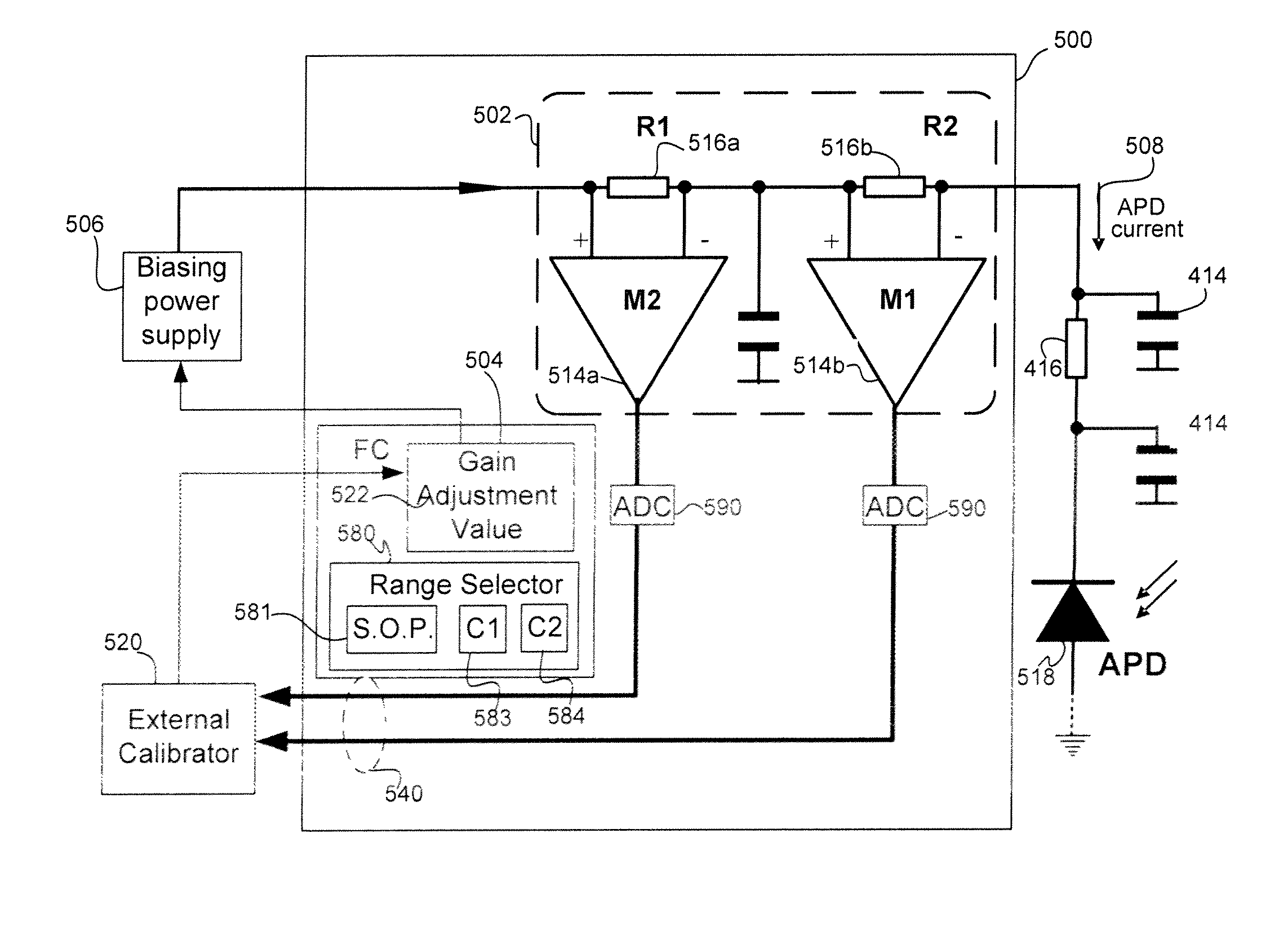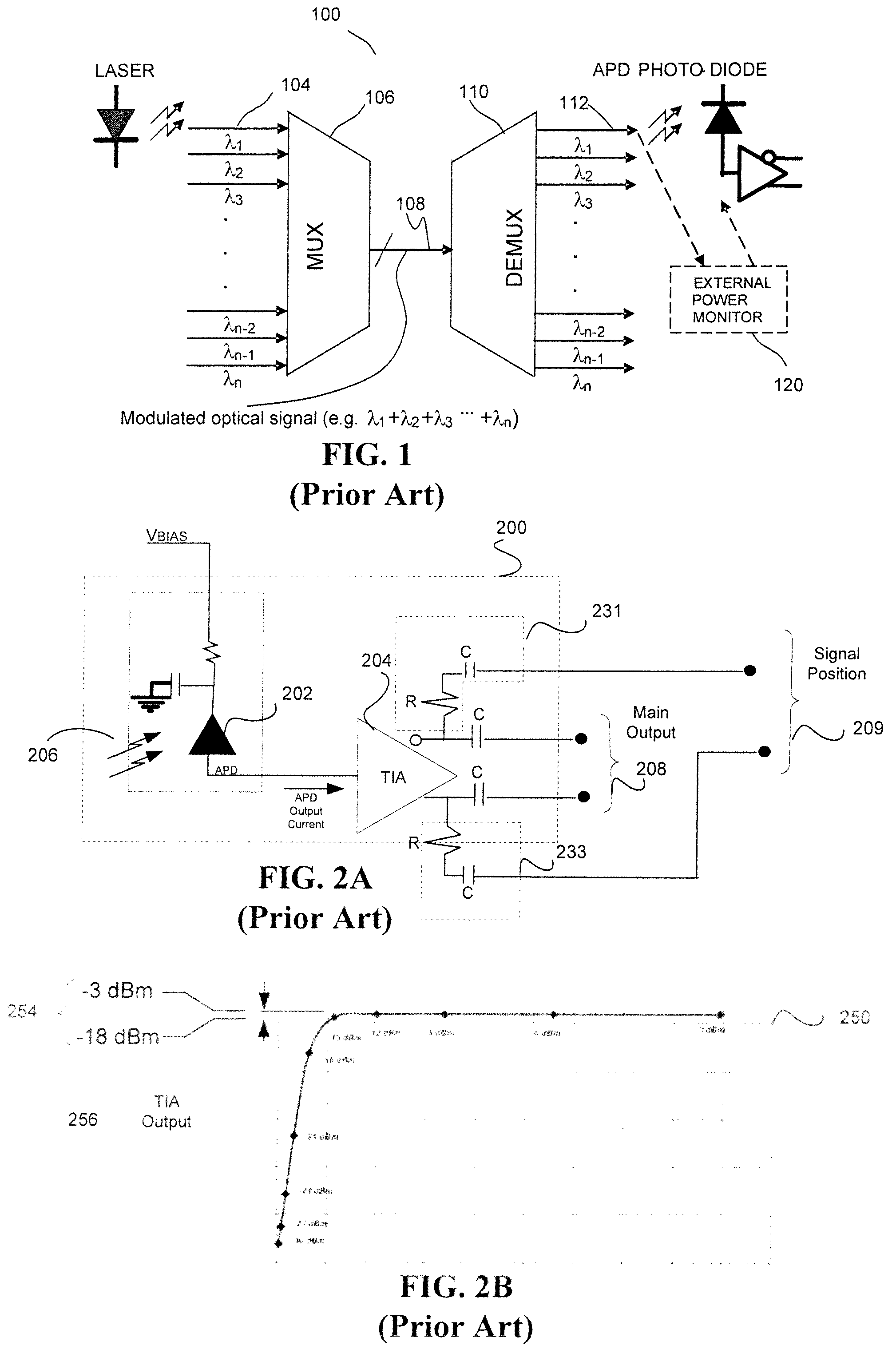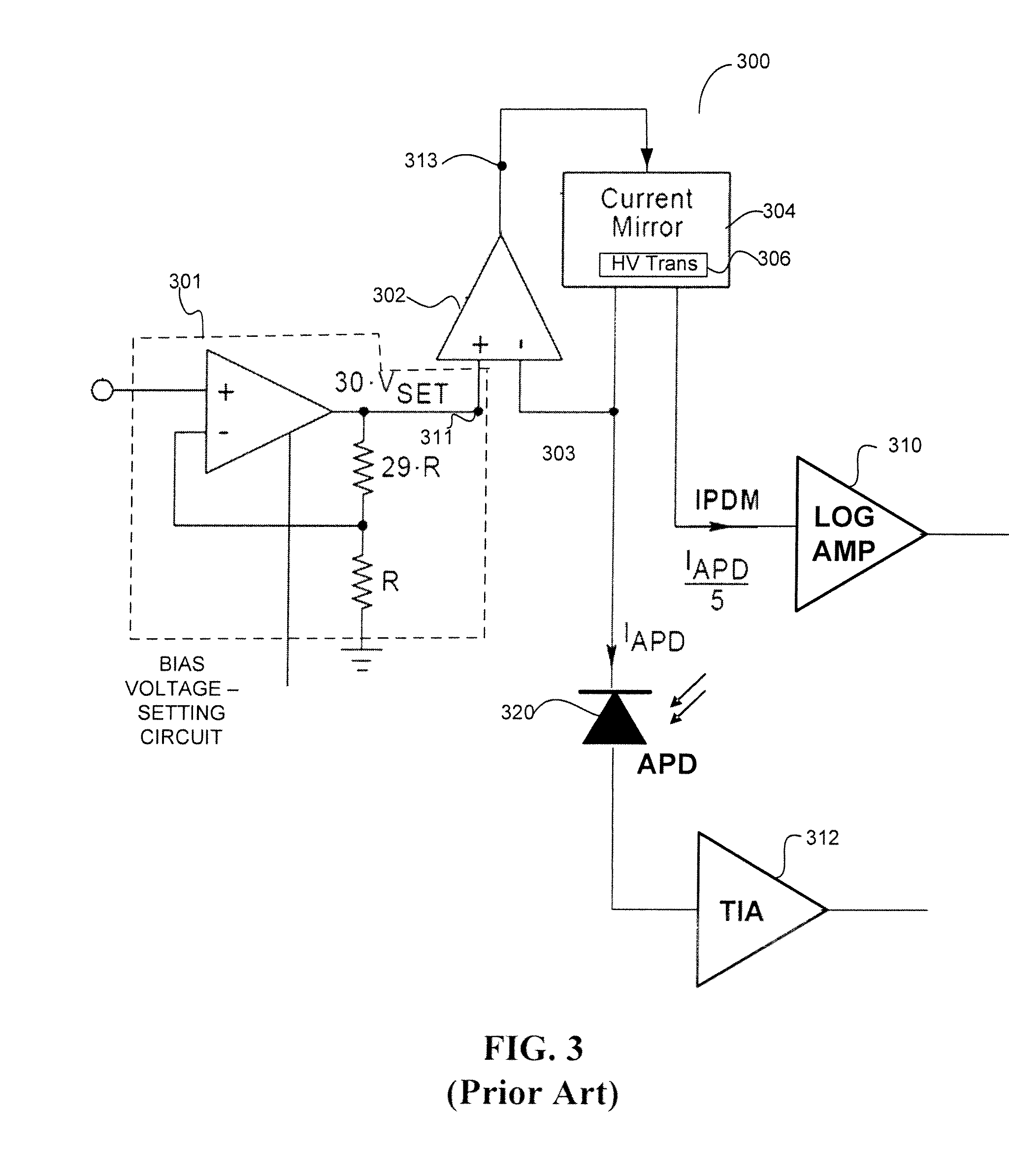In-situ power monitor providing an extended range for monitoring input optical power incident on avalanche photodiodes
a technology of optical power incident and power monitor, which is applied in the direction of optical radiation measurement, photometry using electric radiation detector, instruments, etc., can solve the problems of degrading optical power monitoring, inability to adjust the gain of the in-line apd during normal operation of the apd, and prone to noise and temperature variations, so as to reduce leakage currents and achieve effective immunity
- Summary
- Abstract
- Description
- Claims
- Application Information
AI Technical Summary
Benefits of technology
Problems solved by technology
Method used
Image
Examples
Embodiment Construction
[0026]FIG. 4 is a block diagram of an apparatus that monitors input optical power in-line, according to at least one specific embodiment of the invention. Apparatus 400 includes an in-line power monitor 402 configured to monitor an optical signal 420 into an optical signal detector by, for example, sensing a current 408 flowing from a biasing source (“biasing power supply”) 406, which can provide an adjustable bias voltage. In one embodiment, the optical signal detector is an APD 418. In some cases, a resistance 416 and / or capacitors 414 filter current 408 to reduce, for example, the effects of noise. Apparatus 400 also includes a passive element 403, which can replace 416, to detect and to monitor current 408.
[0027]Note that a current 408 through the APD can be described in accordance with Equation (1) as follows:
I(APD_current)=Ip*APD(responsitivity)*APD(gain), Equation (1)
where Ip represents the photon flux into APD 418, APD(responsitivity) represents the responsitivity of APD 41...
PUM
 Login to View More
Login to View More Abstract
Description
Claims
Application Information
 Login to View More
Login to View More - R&D
- Intellectual Property
- Life Sciences
- Materials
- Tech Scout
- Unparalleled Data Quality
- Higher Quality Content
- 60% Fewer Hallucinations
Browse by: Latest US Patents, China's latest patents, Technical Efficacy Thesaurus, Application Domain, Technology Topic, Popular Technical Reports.
© 2025 PatSnap. All rights reserved.Legal|Privacy policy|Modern Slavery Act Transparency Statement|Sitemap|About US| Contact US: help@patsnap.com



